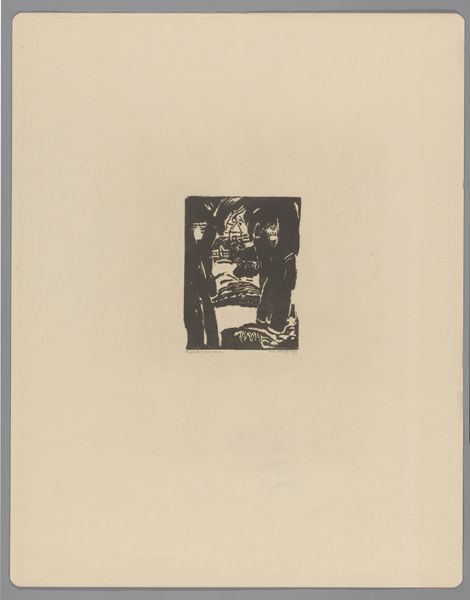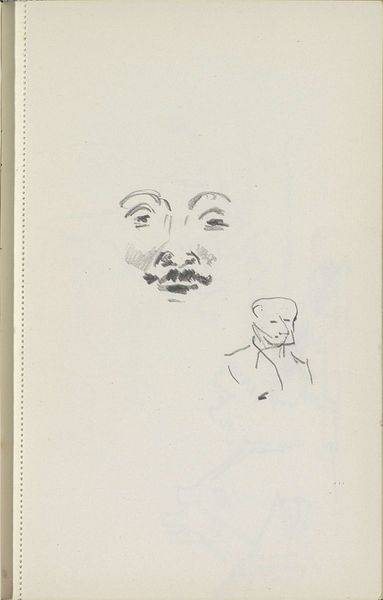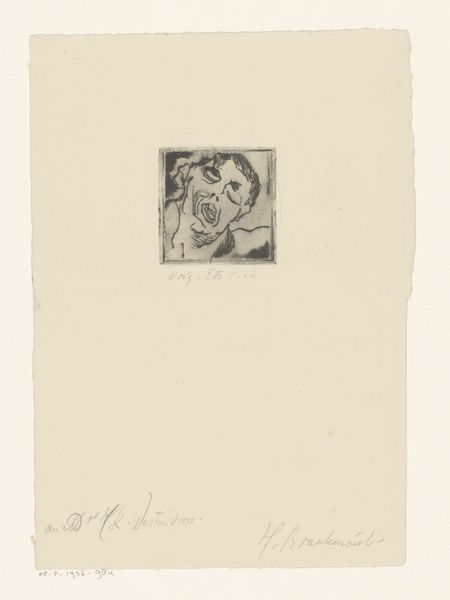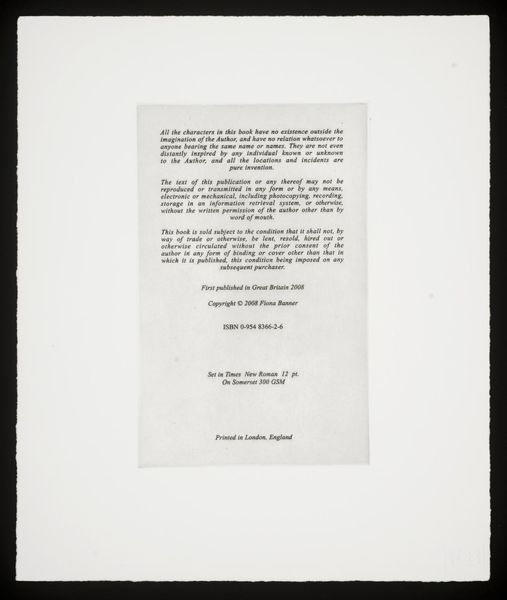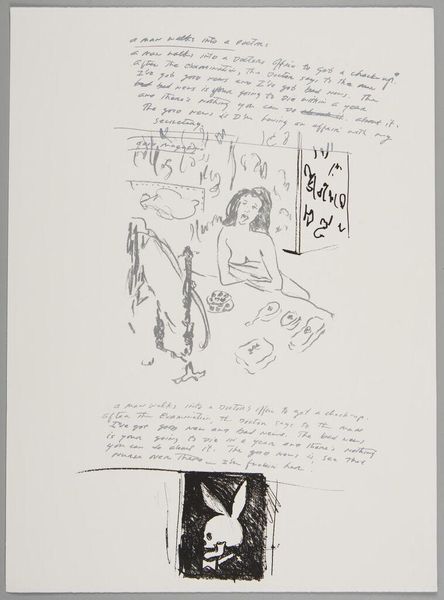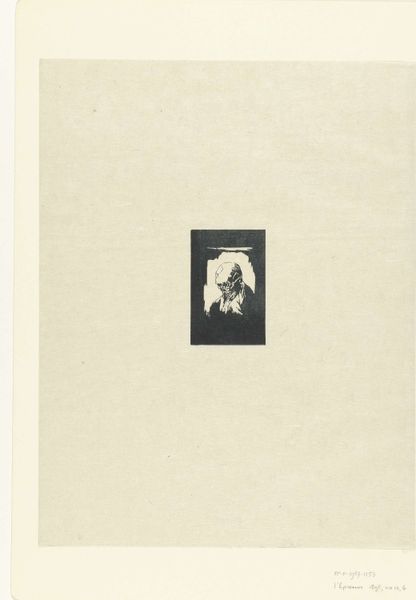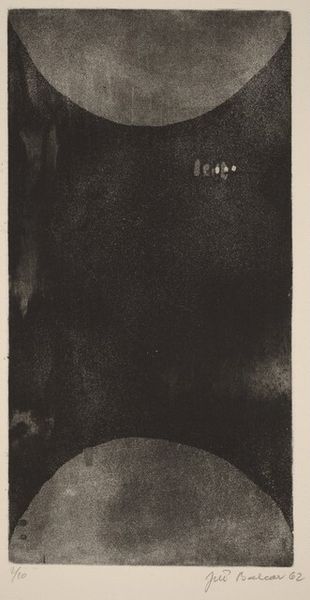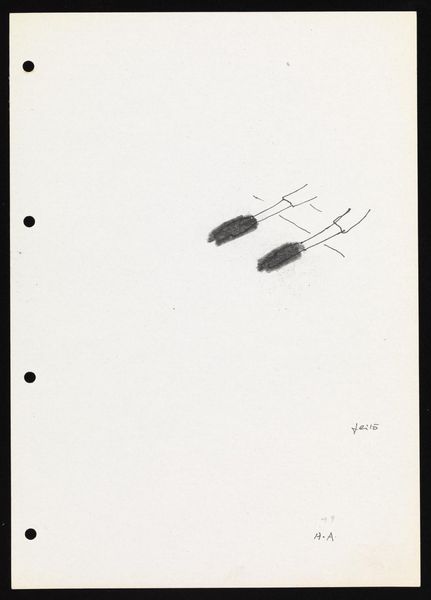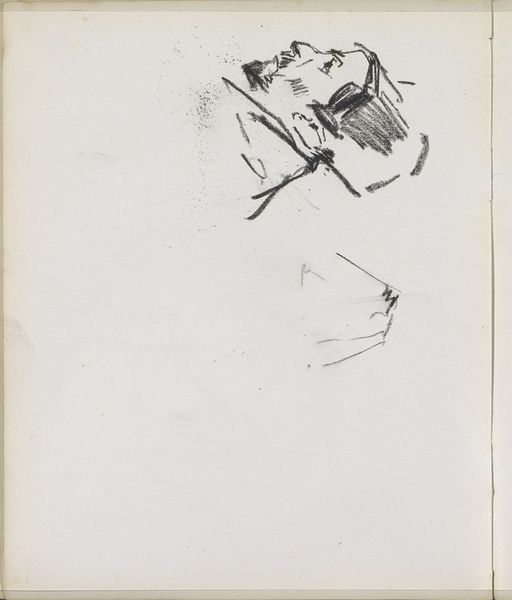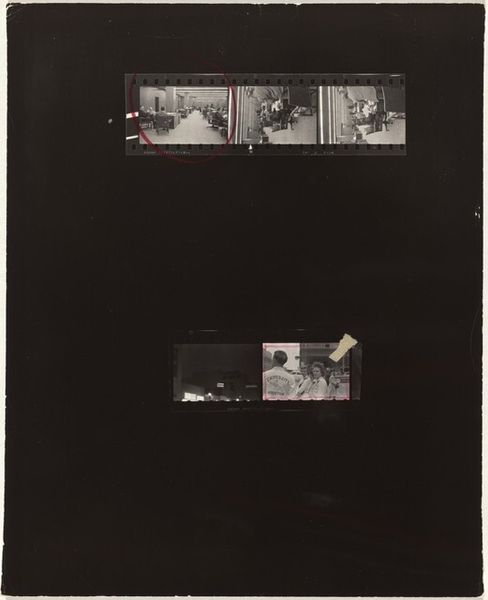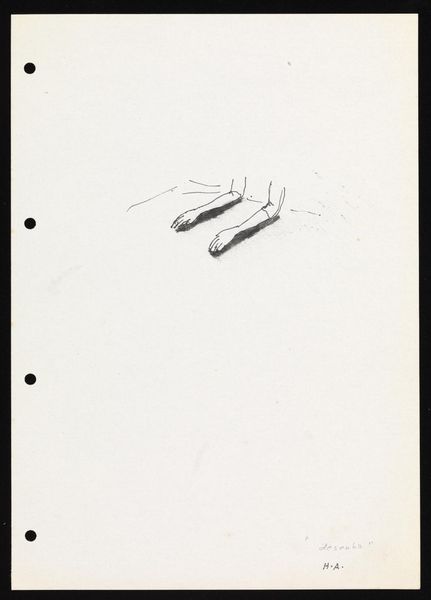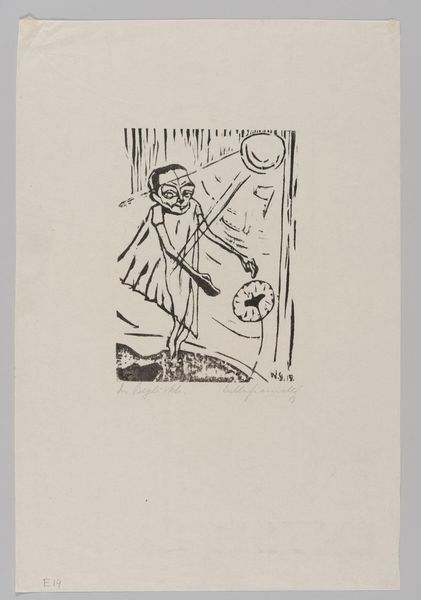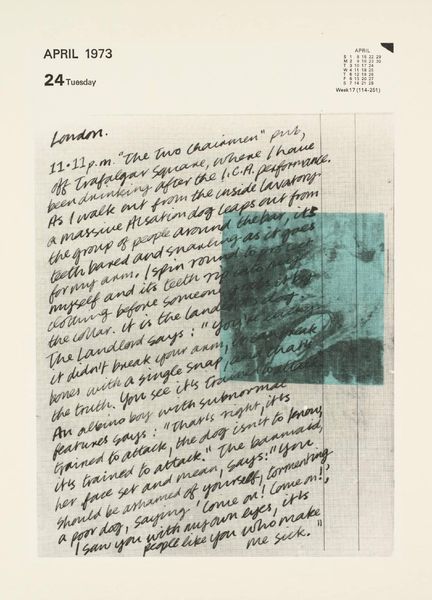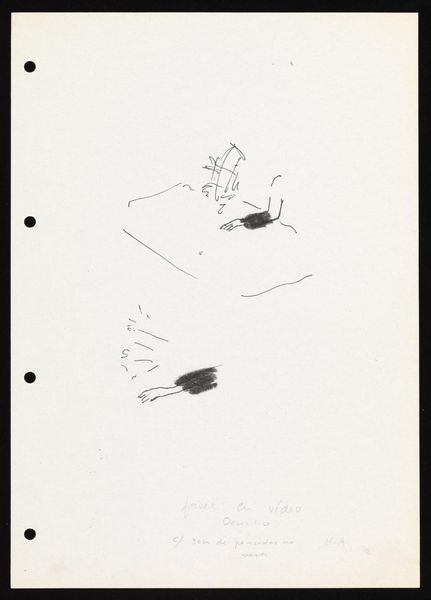
lithograph, print, poster
#
lithograph
# print
#
pop art
#
portrait reference
#
limited contrast and shading
#
united-states
#
animal drawing portrait
#
portrait drawing
#
tonal art
#
remaining negative space
#
poster
#
portrait art
#
fine art portrait
#
digital portrait
Dimensions: 22 x 16 15/16 in. (55.88 x 43.02 cm) (sheet)
Copyright: No Known Copyright
Curator: Let's discuss "In education," a 1970 lithograph by Su Negrin in our collection. What are your initial thoughts? Editor: Stark. That high-contrast face, almost dissolving into dots, gives a primal scream feeling—powerful in its minimalism. It seems raw, yet deliberate in its use of form. Curator: The artist was definitely working within the pop art sensibilities of the time, responding, I believe, to second-wave feminism and civil rights movements by using text alongside image. Lucy Stone’s 1855 quote connects to the disappointments faced by women in areas like education and marriage. Editor: Exactly, you're highlighting the clever integration of text as a crucial component of its design, but formally, how does the material contribute to the message? The starkness created by the lithographic process, the flat, almost graphic rendering of the face… It pushes it away from sentimentality. Curator: And towards reproducibility. A lithograph allows the message to spread, mirroring the aim to make social issues and grievances publicly known. Considering its mass appeal in a time of activism and a need for societal reform makes the method all the more vital. The act of dissemination mirrors the effort to deepen this disappointment in women's hearts so she bows down to it no longer, as Stone noted. Editor: I can certainly see that it provides this accessibility through the lithographic print medium, but what is the meaning and effect when one sees such art printed at scale? Is there something beyond just social concerns in the arrangement? The cropping is really something; it isolates the emotion into this raw, almost abstracted visual scream that speaks beyond its immediate content. Curator: It’s an interesting tension, between the specific demands of the 1970s political context and a broader reading on form alone. Su Negrin’s choice of lithography becomes significant for the political and the practical: making art both about and for the masses. Editor: Precisely. Thanks to Negrin's blending of content, material, and history, this work becomes a complex dialogue, relevant both for then and now.
Comments
No comments
Be the first to comment and join the conversation on the ultimate creative platform.
